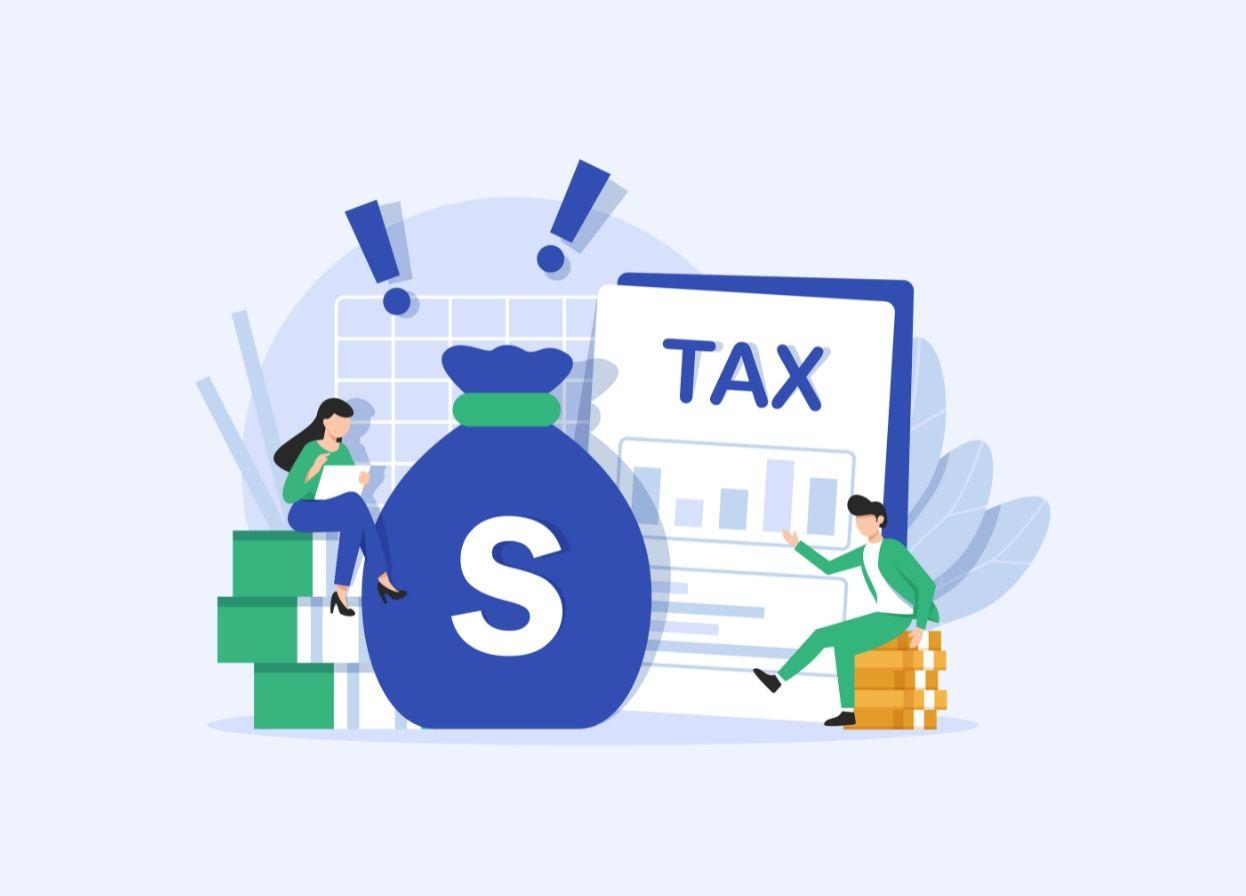Liberalised Remittance Scheme (LRS): Full Form, Meaning and RBI guidelines


The Liberalised Remittance Scheme (LRS), introduced by the Reserve Bank of India (RBI) in 2004, transformed the way Indians send money abroad. Before LRS, transferring funds to support a student studying abroad or helping a relative was a cumbersome process filled with complex rules and lengthy procedures. With LRS, sending money abroad has become simpler and more accessible, especially for purposes like education, travel, and investments.
In this blog, we’ll explore everything about LRS, including its limits, permissible uses, tax implications, and how it simplifies outward remittance for Indian residents.
What is Liberalised Remittance Scheme (LRS)?
The Liberalised Remittance Scheme is a straightforward way for Indian residents to send money abroad. It allows you to transfer USD 250,000 each financial year without any hassles.
LRS is a part of the Foreign Exchange Management Act (FEMA) passed in 1999. The FEMA regulations set the guidelines for foreign exchange management, in other words, how money flows in and out of India. In the case of LRS, it oversees how Indians remit money outside India.
LRS is open to all resident individuals in India, including minors. If a minor is making a remittance, their legal guardian needs to sign the declaration form to authorize it.
You can use LRS for a variety of purposes:
- Current Account Transactions: Like paying for medical treatment, education fees, or travel expenses abroad.
- Capital Account Transactions: Such as investing in foreign stocks or buying property overseas.
You can use LRS for capital and current account transactions within the overall limit of USD 250,000. For example, you can use LRS to pay USD 10,000 as education fees abroad and invest USD 30,000 in foreign stocks. Both are permitted transactions and do not breach the prescribed limit.
Quick Things to Note About LRS:
Here are three quick highlights about LRS that you should know:
- The LRS limit is USD 250,000 in a financial year. At the time of launch, the limit of USD was 25,000. It was later increased in stages to be at par with the prevailing economic conditions
- You cannot use LRS to remit funds abroad for prohibited purposes like lotteries, sweepstakes, proscribed magazines, etc.
- There is no limit on the frequency of sending money using LRS. The only condition is the total amount must not be above the foreign remittance limit set for a financial year.
Who Can Send Money Under LRS?
Indian residents including minors can send money abroad under LRS. The sender must have a valid PAN card, a bank account in India and a passport. For minors sending money abroad, their legal guardian needs to sign the declaration form to authorize it.
However, note that LRS is not available for a corporate entity, partnership firm, HUF (Hindu Undivided Family), etc.
Which Transactions are Permissible Under LRS?
Here is the list of permissible current account transactions and capital account transactions under LRS:
- Emigration - This includes paying for expenses like Visa fees and travel costs
- Personal visit (except Nepal and Bhutan)
- Overseas business trip - If you use LRS to pay for business-related expenses like attending a meeting or conference abroad, it will fall in this category
- Gift or Donation – that includes a rupee gift to a close relative who is a Non-Resident Indian (NRI) or Person of Indian Origin (PIO)
- Employment outside India - When you take up a new job offer overseas, you might need financial support from your family to meet the initial living expenses. They can use LRS to do that
- Pursuing education outside India
- Medical treatment abroad - This covers outward remittances for medical treatments in a foreign country
- Providing support to close relatives abroad
- Purchase of property in foreign lands
- Opening of foreign currency account with a bank outside India
- Buying foreign property
- Investing in overseas shares, securities or mutual funds
- Establishing joint ventures abroad or wholly owned subsidiaries (subject to terms and conditions) - Say you’re expanding your business outside India or entering into a partnership. You can use LRS to send money and cover the initial expenses like registration cost and legal fees
- Extending Rupee loans to NRI relatives as defined in the Companies Act.
Which Transactions are Prohibited Under LRS?
While the Liberalised Remittance Scheme (LRS) offers flexibility for sending money abroad, there are strict rules about what you cannot use it for. Here's a breakdown:
- Prohibited Goods/Services:
- You can’t use LRS to buy lottery tickets, sweepstakes, or any items/services banned under Schedule II of the Foreign Exchange Management (Current Account Transactions) Rules, 2000.
- Terrorism-Linked Transactions:
- Any remittance—direct or indirect—to individuals or entities suspected of involvement in terrorist activities is strictly prohibited.
- Trading in Foreign Exchange:
- Using LRS to trade in foreign exchange or sending money as margin collateral for trading is not allowed.
- Buying FCCBs in Foreign Markets:
- You cannot purchase Foreign Currency Convertible Bonds (FCCBs) issued by Indian companies in foreign secondary markets. These are bonds issued in a currency other than the company's domestic currency.
- Gifting Restrictions:
- While gifting under LRS is permitted, you cannot gift foreign currency to another Indian resident to benefit their foreign currency account held overseas.
- Transactions with High-Risk Countries: LRS prohibits remittances to countries identified by the Financial Action Task Force (FATF) as non-cooperative or high-risk for money laundering or terrorism financing.
What are the RBI Guidelines for Outward Remittance?
In addition to what is permitted and prohibited under LRS, you must be mindful of the RBI guidelines for outward remittances. According to the RBI guidelines, outward remittance can be done via demand draft or opening an overseas bank account.
If you’re planning to do the latter, here are the steps you must follow:
- Choose a bank that is an Authorized Dealer (AD) as outward remittances must be made through these banks
- AD banks must comply with Know Your Customer (KYC) and Anti Money Laundering (AML) norms, which means you’ll need to provide accurate documentation.
- Carry your PAN (Permanent Account Number) Card as it is mandatory for outward remittances
Pick one branch of the AD bank to handle all your remittances under LRS for better tracking and compliance. You can check out the RBI guidelines for inward remittance right here.
What are the Tax Implications on LRS?
If you’re investing money overseas through LRS, then your profits from investments are taxable if the holding period:
- Long-term (over 2 years): 20% of the total profit is taxed
Short-term (less than 2 years): According to the regular income tax slab rates
If your remittance amount is more than INR 700,000, then you’re liable to pay a 5% TCS (Tax Collected at Source). You can claim this TCS as a refund while filing Income Tax Returns (ITR) using Form 26 AS.
What are the Benefits of LRS?
As LRS makes outward remittances a lot simpler, here are some of its biggest benefits:
Education and Training
This is probably the biggest benefit of LRS. With more than 1 million Indian students expected to travel abroad for overseas education in 2024, LRS will be their go-to channel to receive money from their families. This way they can take care of their tuition fees and living expenses without affecting their education.
Travelling
LRS is convenient for those who travel overseas frequently. They could use it to pay for tickets, hotels, and other travel-related expenses
Diversification of Investment
An investor could take advantage of LRS to diversify their investments abroad. They can invest in shares, mutual funds, bonds, and real estate to maximize their returns
Gifts and Donations
LRS is the ideal avenue if you want to give gifts to your family members or relatives staying overseas. Likewise, you can also make donations to charitable organizations based outside of India
Medical Treatment
Medical treatments overseas are expensive and often come unannounced. But with the help of LRS, you can transfer money and pay for the bills in the medical institute. It’s also a payment option for those patients who have travelled abroad for specialized treatment
Family Support
You can also send money to your relatives via LRS to help them meet their living expenses. This is highly useful when they’re going through financial difficulties.
What Happens if You Need to Remit More Than USD 250,000?
If you need to remit beyond the USD 250,000 limit under LRS, there are specific exceptions:
- Emigration, Medical Treatment, and Education Abroad: You can exceed the limit for these purposes if required by the destination country, the medical institution, or the university. However, certain conditions must be met to qualify.
- Other Cases: For any other reason, remitting more than USD 250,000 requires prior approval from the Reserve Bank of India (RBI).
Always ensure you meet the necessary conditions or secure RBI approval for larger remittances.
Receive Foreign Payments in India seamlessly with Skydo
The Liberalised Remittance Scheme (LRS) streamlines outward remittances for resident Indians. As LRS falls under FEMA and operates within the RBI guidelines, it is one of the safest and most trustworthy solutions for sending money abroad. This is a huge relief for students studying overseas as their families can transfer money without hassles. The same applies to medical treatments in foreign lands or to help relatives meet their daily expenses.
Like LRS streamlines outward remittance, Skydo simplifies receiving international payments in India. It offers virtual accounts that allow you to receive money from international clients as if they’re making a local transfer. So when your clients make payments to your virtual accounts, they don’t have to incur the high costs like SWIFT fees associated with international payments.
In addition to that, your payments are converted to local currency based on live exchange rates so that you get the best value. Whether you’re an exporter or a freelancer, Skydo is the right partner to grow your business overseas.
What is the limit under LRS?
The prescribed limit under LRS is USD 250,000 in a financial year
What transactions are prohibited under LRS?
Is LRS taxable?
Can remittances be made only in US Dollars?
Who is not eligible for LRS?












